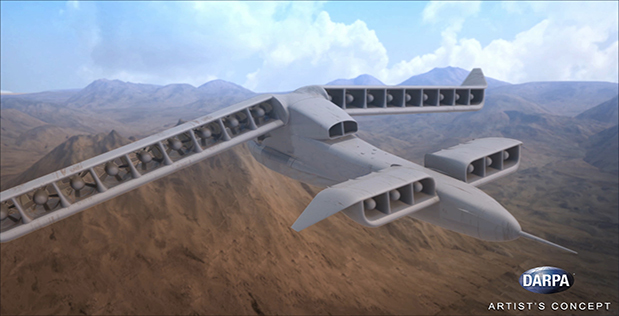-
Tips for becoming a good boxer - November 6, 2020
-
7 expert tips for making your hens night a memorable one - November 6, 2020
-
5 reasons to host your Christmas party on a cruise boat - November 6, 2020
-
What to do when you’re charged with a crime - November 6, 2020
-
Should you get one or multiple dogs? Here’s all you need to know - November 3, 2020
-
A Guide: How to Build Your Very Own Magic Mirror - February 14, 2019
-
Our Top Inspirational Baseball Stars - November 24, 2018
-
Five Tech Tools That Will Help You Turn Your Blog into a Business - November 24, 2018
-
How to Indulge on Vacation without Expanding Your Waist - November 9, 2018
-
5 Strategies for Businesses to Appeal to Today’s Increasingly Mobile-Crazed Customers - November 9, 2018
DARPA’s New Airplane Can Take Off Without a Runway
Increasing top speed without sacrificing range, efficiency, or the ability to do useful work is one of the main challenges.
Advertisement
“If successful, VTOL X-Plane’s radically improved flight capabilities could lead to revolutionary advancement in the USA military’s future mission capabilities”, said John Langford, chairman and chief executive officer of Aurora, in an announcement Thursday.
Previous vertical takeoff aircraft have struggled because of the difficulty in combining technology that helps the aircraft be able to fly quickly but also hover.
If all goes well, it could reach a top speed of about 460 miles per hour, all while being capable of carrying around 4,000 pounds of gear or troops.
■ Raise aircraft hover efficiency from 60 percent to at least 75 percent.
Aurora Flight Sciences will build a prototype of its unmanned, hybrid-propulsion “LightningStrike” aircraft after beating two remaining competitors for the coveted DARPA vertical take-off and landing (VTOL) X-plane project.
The design is an unmanned aircraft with two large rear wings and two smaller front canards, short wings mounted near the nose of the aircraft. Called X-Plane, it will use a 4,000 horsepower engine-actually the same one as is in the existing VTOL craft the V-22 Osprey, according to Engadget-to create 3 megawatts of electricity. The engine would power 24 ducted fans with nine in each wing and three inside each canard. Both the wings and the canards would rotate to direct fan thrust as needed: “rearward for forward flight, downward for hovering and at angles during transition between the two”, DARPA stated.
The DARPA technology demonstrator’s flight control system (FCS) builds on the heritage of Aurora’s Centaur and Orion optionally manned and unmanned aircraft platforms.
“This is an extremely novel approach”, Ashish Bagai, DARPA program manager, said in a statement.
“We want to open up whole new design and mission spaces freed from prior constraints, and enable new VTOL aircraft systems and subsystems”.
Advertisement
Phase II will include design, development and integration of the aircraft while flight-test demonstrations will be undertaken in Phase III by February 2018.





























